Call Center Best Practices: Elevate Your Customer Support Game
Call centers play a pivotal role in the success of businesses by providing crucial support, resolving customer inquiries, and helping companies maintain positive relationships with their clients. The efficiency of a call center can significantly influence customer satisfaction, brand reputation, and overall business performance. As a result, it’s essential to adopt and implement call center best practices to create a smooth, customer-centric, and efficient operation.
1. Agent Training and Development: The Foundation of Success
One of the most critical components of an effective call center is well-trained agents. Agents are often the face (or voice) of the company, so it’s essential that they are equipped to handle customer inquiries, challenges, and complaints with confidence. Comprehensive training should cover:
- Product Knowledge: Agents should be well-versed in the products or services they are supporting. This enables them to provide accurate and insightful answers to customers’ questions.
- Communication Skills: Proper communication is key. Agents must be taught to use clear and professional language, listen actively, and express empathy when needed. Teaching agents how to manage difficult conversations can also prevent negative interactions.
- Problem-Solving Abilities: Training should focus on helping agents develop critical thinking skills to solve problems quickly and efficiently, especially when they need to handle unexpected issues.
- Technical Proficiency: Agents must be trained in using the tools and technology employed in the call center, such as customer relationship management (CRM) systems, call management platforms, and ticketing software.
A continuous training program that includes coaching, real-time feedback, and ongoing development can help ensure that agents are always up to date with the latest policies, product changes, or system updates.
2. Leverage Technology for Better Performance
Technology is a powerful enabler in a modern call center. Using the right tools not only enhances the efficiency of agents but also improves the overall customer experience. Some key technologies to consider include:
- Customer Relationship Management (CRM) Systems: CRM software helps agents keep track of customer interactions, access customer information, and manage relationships more effectively.
- Call Routing and Distribution Systems: Implementing an Automatic Call Distributor (ACD) ensures that calls are routed to the right agent based on their skill set, availability, or department. This helps minimize waiting times and ensures the customer is connected to the person best equipped to assist them.
- Interactive Voice Response (IVR): IVR systems guide callers through a series of automated options, allowing them to resolve basic queries without speaking to an agent. This reduces call volumes and ensures that agents focus on more complex tasks.
- Call Analytics Tools: By analyzing call data, you can track key performance indicators (KPIs) such as average handle time, call resolution rates, and customer satisfaction. This data can help you pinpoint areas for improvement, train agents more effectively, and optimize your workflows.
3. Prioritize First Call Resolution (FCR)
First Call Resolution (FCR) is one of the most important metrics in a call center because it directly impacts customer satisfaction. Customers appreciate getting their issues resolved on the first call, without needing to follow up or be transferred to multiple departments.
To improve FCR, consider the following approaches:
- Empower Agents: Equip agents with the authority and resources they need to resolve issues during the first call, without needing to escalate the problem.
- Improve Knowledge Bases: Ensure that agents have easy access to a comprehensive knowledge base, containing troubleshooting steps, product details, and FAQs. A well-organized internal knowledge base allows agents to find answers quickly, improving their ability to resolve issues.
- Call Routing: Make sure that calls are routed to the right agent from the start. Using an ACD system or intelligent call routing ensures customers are connected to agents with the appropriate expertise.
4. Monitor and Improve Customer Experience
Customer experience (CX) should always be at the forefront of call center operations. A positive experience builds brand loyalty and increases customer retention, while a poor experience can result in negative reviews and lost business.
Here are some ways to monitor and improve the customer experience:
- Surveys and Feedback: Use post-call surveys to gather customer feedback on their experience. Pay attention to common complaints or recurring issues, and address them in your training or processes.
- Call Monitoring: Regularly monitor calls to evaluate agent performance and customer interactions. This helps ensure agents are adhering to company policies and delivering excellent customer service.
- Customer Journey Mapping: Understand your customers’ journey and identify pain points or areas where their experience can be improved. This can lead to actionable improvements in how calls are handled, and where technology or training gaps exist.
5. Agent Engagement and Retention
A motivated and engaged workforce directly impacts the performance of a call center. High turnover rates can be a significant problem in call centers, leading to loss of productivity and increased training costs. Here are some strategies for boosting agent engagement and improving retention:
- Create a Positive Work Environment: Promote a culture of support, collaboration, and recognition. Celebrate the successes of agents and reward outstanding performance through incentives, bonuses, or employee appreciation programs.
- Provide Career Growth Opportunities: Offer professional development programs that allow agents to expand their skill sets or move into higher-level roles.
- Empowerment: Give agents more autonomy in their roles. Allowing them to make decisions and take ownership of customer interactions can boost their confidence and job satisfaction.
- Work-Life Balance: Call center jobs can be stressful, so it’s important to promote a healthy work-life balance. Consider offering flexible schedules or wellness programs to support your agents’ mental health and well-being.
6. Measure and Track Performance
To ensure continuous improvement, it’s essential to measure and track key performance indicators (KPIs) in your call center. Regularly analyzing performance metrics allows you to identify strengths, weaknesses, and opportunities for optimization.
Some important KPIs include:
- Average Handle Time (AHT): The average duration of a customer interaction, from the beginning of the call to the completion of after-call work. Reducing AHT without sacrificing quality can lead to higher efficiency.
- Customer Satisfaction (CSAT): CSAT measures how satisfied customers are with their experience. Post-call surveys are an effective way to gather this data.
- Net Promoter Score (NPS): NPS measures how likely customers are to recommend your company to others. A high NPS indicates strong customer loyalty.
- First Call Resolution (FCR): FCR tracks the percentage of calls where the customer’s issue is resolved during the first contact. Higher FCR rates typically result in better customer satisfaction and reduced follow-up calls.
7. Implement Quality Assurance Programs
A quality assurance (QA) program is essential for maintaining high standards in your call center. QA involves regularly evaluating agent performance and identifying areas where improvements can be made.
- Regular Call Audits: Listen to call recordings or observe live calls to evaluate agent performance based on specific criteria, such as adherence to scripts, tone of voice, and problem-solving abilities.
- Provide Constructive Feedback: Use QA findings to provide agents with actionable, constructive feedback. Focus on areas where they can improve and offer additional coaching or training if needed.
- Calibration Sessions: Hold regular calibration sessions where team leaders, supervisors, and QA staff come together to align their evaluation criteria. This ensures consistency in performance assessments and feedback delivery.
Conclusion:
Call center best practices are essential for delivering exceptional customer service, optimizing operational efficiency, and maintaining high levels of employee satisfaction. By focusing on comprehensive agent training, leveraging technology, improving first call resolution, and continuously measuring performance, you can create a highly effective and successful call center. Invest in your team, embrace technology, and put the customer experience at the heart of everything you do. Implementing these best practices will not only elevate your call center’s performance but also help you build stronger relationships with your customers and employees alike.

